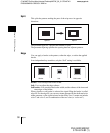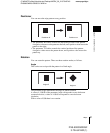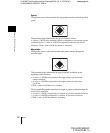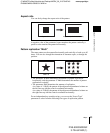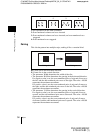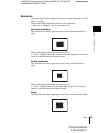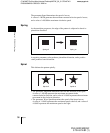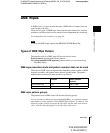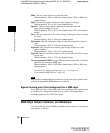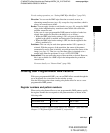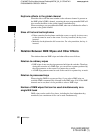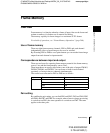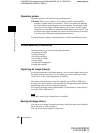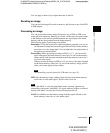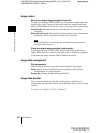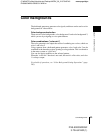
Chapter 1 DVS-9000 Functions
C:\WINNT\Profiles\Administrator\Desktop\WORK_08_21\370467401
DVS9000WW\01GB03C01-WW.fm
masterpage:Left
58
DME Wipes
DVS-9000/9000SF
3-704-674-01 (1)
Slide: The new video slides in over the old video.
(Pattern numbers: 1001 to 1008 (one-channel mode), 2601 to 2608 (two-
channel mode))
Split: The old video splits, and the new video appears in the gap.
(Pattern numbers: 1011 to 1013 (one-channel mode))
Squeeze: The new video appears squeezed over the old video, and
progressively expands to cover it.
(Pattern numbers: 1021 to 1031 (one-channel mode), 2621 (two-channel
mode))
Door: The new video moves like a door closing, and progressively covers the
old video.
(Pattern numbers: 1041 to 1044 (one-channel mode))
Flip tumble: The old video rotates about an axis and is replaced by the new
video.
(Pattern numbers: 1101 to 1102 (one-channel mode))
Page turn: The old video moves like a page turning, and the new video
appears behind it.
(Pattern numbers: 1301 to 1313 (one-channel mode))
Page roll: The new video unrolls like a scroll over the old video. This is a type
of page turn.
(Pattern numbers: 1321 to 1333 (one-channel mode))
User programmable DME: Using a DME keyframe created with a keyframe
operation, this executes a DME wipe.
(Pattern numbers: 1901 to 1999 (one-channel mode), 2901 to 2999 (two-
channel mode))
For details of creating keyframe effects, see “Creating User
Programmable DME Patterns” (page 59).
Note
Note that for an independent key transition, only the slide, split, squeeze, door,
and user programmable DME patterns are available.
Signals forming part of the background for a DME wipe
In two-channel mode, or flip tumble and so on, in addition to the signals on the
A and B buses, a background signal may be visible. This background is
normally supplied by the UTIL2 bus signal.
DME Wipe Pattern Variation and Modifiers
You can modify the selected DME wipe pattern in the same way as an ordinary
wipe pattern, as follows.



